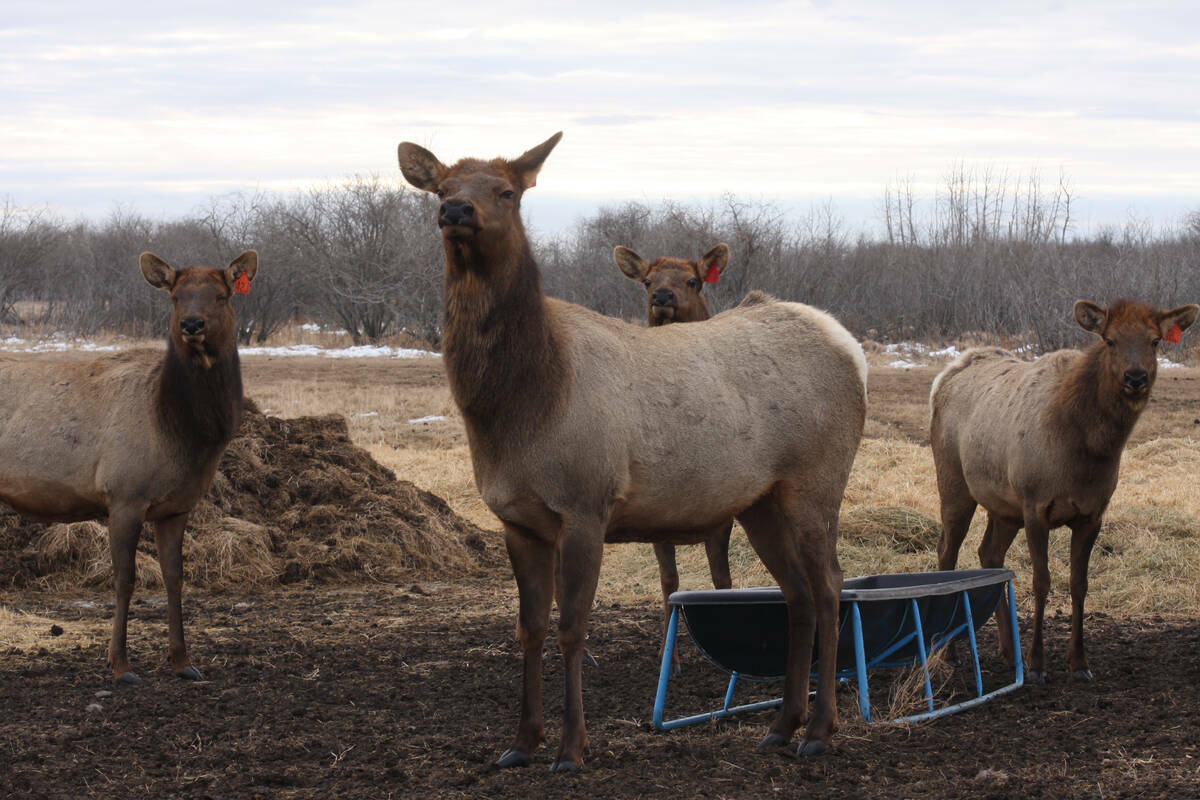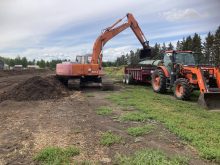Harvest 2015 is, finally, a wrap and the storyline is pretty much the same across most of the province — yields are poor but not as bad as feared, and quality is surprisingly good.
The final crop report from Alberta Agriculture and Forestry says yield estimates are higher than first forecast earlier in the summer.
“Provincial average yields for spring and durum wheat are reported at 86 and 85 per cent of their five-year averages, with barley at 90 per cent, oats at 86 per cent, canola at 95 per cent, and dry peas at 80 per cent,” the report states.
Read Also

Cervid harvest preserves to be developed in the province under Bill 10
The Government of Alberta has given approval for creation of cervid harvest preserves.
Spring wheat is estimated to have averaged 40.4 bushels an acre and canola 36.4 bu./ac. Barley came in at 58.9 bu./ac., oats at 66.5 bu./ac., dry peas at 35.2 bu./ac., and durum at 36.9 bu./ac.
Of course, those provincial averages cover a huge area and a lot of variation. Here’s the capsule version for the five provincial crop regions:
Region One: Southern (Strathmore, Lethbridge, Medicine Hat, Foremost):
A tough year, with yields 10 to 20 per cent below the five-year average. Fall rains boosted soil moisture and so one-quarter of fall-seeded crops are rated fair with 65 per cent classed as good or excellent.
Region Two: Central (Rimbey, Airdrie, Coronation, Oyen):
It was ugly for durum (18 per cent below five-year average yields), winter wheat (16 per cent), and dry peas (20 per cent), but yields for spring wheat, barley, and canola are estimated to be just five per cent off the five-year average.
Region Three: North East (Smoky Lake, Vermilion, Camrose, Provost):
The numbers are all over the place. Canola yields are estimated to be at the five-year average, but spring wheat is off 12 per cent, and barley, oats, and dry peas are 20 per cent down. But the worst was winter wheat, with yields a whopping 37 per cent below the five-year average.
Region Four: North West (Barrhead, Edmonton, Leduc, Drayton Valley, Athabasca):
Here, too, canola yields stood out by being average, and wheat was 12 per cent off. But other crops didn’t fare quite as poorly as the North East — barley was down 13 per cent, oats 16 per cent, and dry peas down 18 per cent.
Region Five: Peace River (Fairview, Falher, Grande Prairie, Valleyview):
Not too bad compared to the five-year averages, but Peace yields tend to be below provincial averages. This year, canola was “a little above” average, while barley (down two per cent) and dry peas (down five per cent) were close to average. Spring wheat was 15 per cent below the five-year average and oats were down about 12 per cent.
The news on quality is better, despite drought in the summer and a wet fall, which caused a significant amount of sprouting.
“Quality is still significantly above the five-year and 10-year averages for all crops, except for malt barley, oats and canola,” said the Alberta Agriculture report.
Among those numbers:
- More than 76 per cent of spring wheat graded No. 2 or better (15 per cent higher than the five-year average).
- Canola quality declined about 12 per cent from the five-year average, with 80 per cent graded No. 1.
- Durum wheat quality graded at 85 per cent for the top two grades (up 18 per cent).
- About 74 per cent of dry peas graded as No. 1 or No. 2 (usp two per cent).
- While 65 per cent of barley graded as No. 1 (close to the five-year average), only 13 per cent of barley qualified as malt (down four per cent).
















